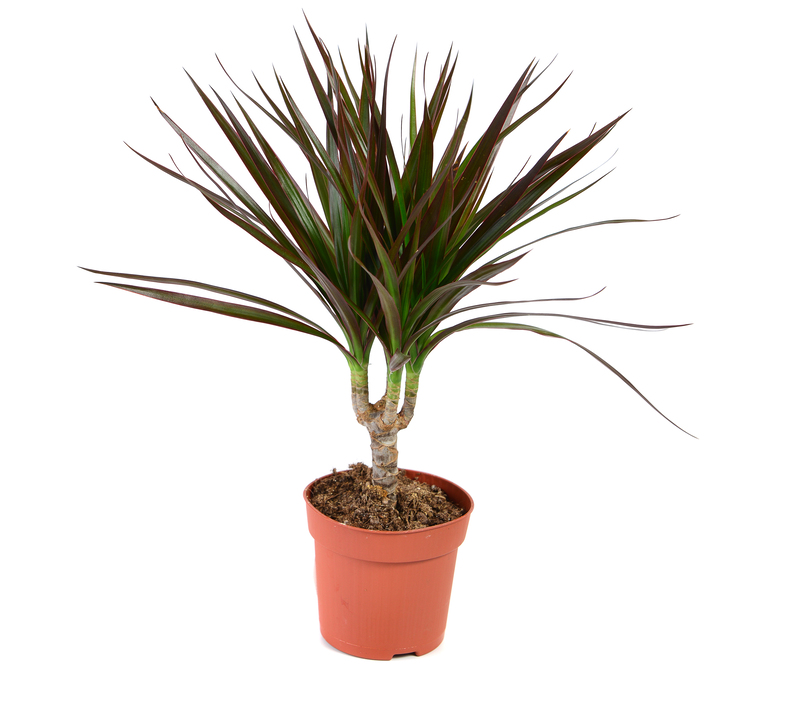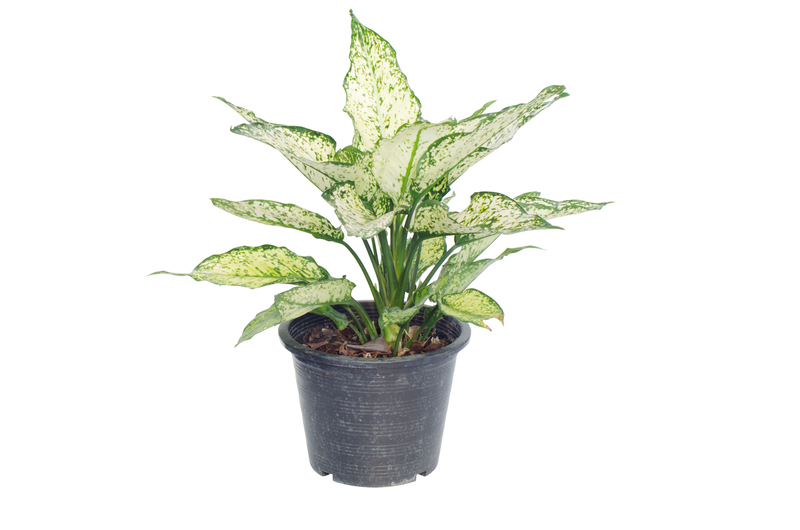Gardening: A Green Weapon in the Climate Change Arsenal
Posted on 18/08/2025
Gardening: A Green Weapon in the Climate Change Arsenal
Gardening has long been cherished as a relaxing hobby, a source of beauty, and a way to cultivate fresh food. However, few realize that gardening is increasingly becoming a powerful tool against climate change. As the world seeks solutions to mitigate the destructive impacts of global warming, every green space counts. In this comprehensive guide, we'll delve into how environmentally friendly gardening is emerging as a green weapon in the climate change arsenal.
Understanding the Link: Gardening and Climate Change
Climate change represents one of the greatest challenges facing humanity. Rising global temperatures, unpredictable weather, and frequent natural disasters are stark reminders of our planet's vulnerability. Yet, amidst global policies and technological innovations, simple gardening practices offer a surprising amount of impact in the battle against carbon emissions and environmental degradation.
- Carbon Sequestration: Plants absorb carbon dioxide (CO2) from the atmosphere during photosynthesis, storing it in their roots, stems, and leaves.
- Biodiversity Support: Gardens provide refuge for pollinators, birds, and beneficial insects, ensuring the survival of vital species.
- Soil Health and Water Management: Healthy soil acts as a carbon sink while sustainable watering reduces strain on freshwater supplies.
- Local Food Production: Growing food locally reduces the carbon footprint associated with transportation and packaging.

How Gardens Combat Global Warming
1. Carbon Capture and Storage
One of the most critical roles gardens play in the climate battle is carbon capture. Whereas large-scale reforestation projects receive widespread attention, millions of home gardens cumulatively form an enormous sequestration force. Each plant--whether it's a tree, shrub, or even a patch of lawn--extracts CO2 from the air and stores it as biomass.
- Trees and perennial shrubs are especially effective, as they can lock away carbon for decades or centuries.
- Composting garden waste and organic matter enhances soil carbon content, further trapping greenhouse gases.
2. Biodiversity and Ecosystem Resilience
Diversifying planting in your garden doesn't just make it look stunning--it also builds resilient local ecosystems. Healthy, diverse gardens:
- Attract pollinators like bees and butterflies, which are crucial for food crops and wild plants.
- Offer habitat and food sources for birds, amphibians, and beneficial insects.
- Foster natural pest control, reducing the need for synthetic chemicals.
These small pockets of biodiversity act as climate change buffers, helping ecosystems adapt to environmental stressors.
3. Sustainable Food Production & Reduced Carbon Footprints
The global food supply chain is a significant source of emissions due to transportation, packaging, and resource-intensive agriculture. By growing fruits, vegetables, and herbs at home, gardeners:
- Lower the demand for food grown with fossil fuel-based fertilizers and pesticides.
- Reduce the carbon emissions involved in transporting food over long distances.
- Minimize reliance on single-use packaging and preservatives.
- Promote seasonal, organic produce for healthier consumption and sustainable living.
4. Water Conservation and Flood Mitigation
Well-designed gardens can help manage rainfall and reduce water runoff. Dense planting and permeable surfaces allow water to slowly soak into the ground, limiting flooding and keeping local waterways clean. Furthermore:
- Rain gardens capture water from roofs and driveways, filtering pollutants naturally.
- Mulching and efficient irrigation reduce overall water use--crucial during drought conditions linked to climate change.
Eco-Friendly Gardening: Sustainable Practices for Maximum Impact
Transitioning to sustainable gardening practices amplifies the environmental benefits of your green space. Here are actionable strategies to turn your garden into a potent climate ally:
1. Grow Native and Climate-Resilient Plants
Native species are adapted to local climate conditions, requiring less water, fertilizer, and pest control. They support regional biodiversity and often thrive with minimal maintenance. Gardeners can strategically choose plants that are drought-tolerant or resilient to extreme weather, helping ecosystems withstand climate disruptions.
2. Practice Organic and Regenerative Gardening
Organic gardening shuns synthetic pesticides and fertilizers, which are derived from fossil fuels and harm soil microbes. Regenerative gardening goes further, focusing on soil health by:
- Adding organic compost.
- Using cover crops to prevent erosion and fix nitrogen.
- Mulching to retain moisture and suppress weeds.
- Rotating crops and planting polycultures.
These methods enhance soil carbon storage and create a thriving, balanced ecosystem beneath your feet.
3. Minimize Chemical Usage
Reduce carbon-intensive inputs by:
- Hand-pulling weeds instead of applying herbicides.
- Utilizing natural pest deterrents like neem oil, soap spray, or introducing beneficial predators.
- Implementing integrated pest management (IPM) techniques.
Less chemical use means fewer emissions and healthier pollinators.
4. Composting: Transforming Waste into Rich Soil
Composting garden and kitchen waste returns valuable nutrients to the earth. It also prevents organic waste from ending up in landfills, where it would generate methane--a potent greenhouse gas. A robust compost pile:
- Increases microbial diversity in soil.
- Improves soil structure and its ability to store carbon.
- Reduces the need for synthetic fertilizers.
5. Smart Watering Techniques
Water scarcity is a growing issue as climate patterns shift. Employ water-smart gardening by:
- Collecting rainwater in barrels.
- Using drip irrigation systems instead of sprinklers.
- Watering early in the morning or late evening to minimize evaporation.
- Grouping plants with similar water needs.
6. Urban Gardening & Green Infrastructure
Cities face unique challenges from the urban heat island effect and limited natural spaces. Urban gardening--such as rooftop gardens, green walls, and community gardens--can counteract these issues by:
- Lowering local temperatures with shade and evapotranspiration.
- Improving air quality and capturing airborne pollutants.
- Enhancing community resilience and food security.
Gardening Success Stories: Real-World Climate Benefits
The Community Garden Movement
In urban centers worldwide, community gardens are reclaiming vacant lots and underused spaces. These gardens not only reduce the environmental footprint by producing hyper-local food, but also educate residents about sustainable practices and foster climate awareness. Community gardens have consistently demonstrated:
- Increased local biodiversity and green corridors.
- Meaningful drops in neighborhood carbon emissions.
- Enhanced community cohesion and mental health--important aspects of climate resilience.
The Rise of Permaculture
Permaculture emphasizes the creation of self-sustaining ecosystems that mimic natural landscapes. By integrating edible plants with perennials, restoring soil health, and maximizing resource efficiency, permaculture gardens are showing the world how food production can coexist with climate mitigation at any scale.
Gardening for Climate: Tips for Every Gardener
- Start Small: Even a single pot on a balcony contributes! Herbs, dwarf fruit trees, and vegetables can thrive in containers.
- Promote Tree Planting: Planting and nurturing a tree is one of the most effective individual actions for carbon sequestration.
- Reduce Lawn Areas: Replace traditional lawns with wildflower meadows, vegetable beds, or native shrubs to maximize biodiversity and soil health.
- Encourage Wildlife: Add birdhouses, insect hotels, and water sources to create a thriving ecosystem.
- Educate and Advocate: Share knowledge with neighbors, schools, and communities to multiply garden-driven climate benefits.

Gardening: More Than Just a Hobby
When you dig into the earth, nurture a seed, and watch greenery flourish, you are participating in one of the most accessible forms of climate action. Gardening is more than an escape or a passion--it is a green weapon, quietly yet powerfully shaping a more sustainable and livable world.
- It improves your local environment.
- It reduces your carbon footprint.
- It provides healthy, fresh food.
- It helps wildlife thrive during challenging times.
Conclusion: The Future of Gardening in the Climate Change Fight
The next time you pick up a trowel or plant a seed, remember: your garden is part of a global climate solution. As researchers, gardeners, and governments recognize the power of green spaces, gardening will continue to grow in importance as a sustainable, scalable, and enjoyable response to climate change.
Whether you're tending a windowsill herb box or transforming a city block, every bit of greenery counts. Start your journey today, and become a climate champion--one plant at a time!
Frequently Asked Questions (FAQs)
- How does gardening help combat climate change?
By capturing carbon, supporting biodiversity, managing water, and enabling local food production, gardens directly address several key environmental problems. - Can container or small-space gardening make an impact?
Yes! Every plant helps, and small gardens collectively make a major difference in urban areas by providing green cover and habitat. - Which plants are best for climate-smart gardening?
Choose native, climate-resilient species and those that provide food or shelter for pollinators and birds.
Embrace gardening as your personal contribution to the climate change arsenal--and watch both your garden and the planet flourish.

